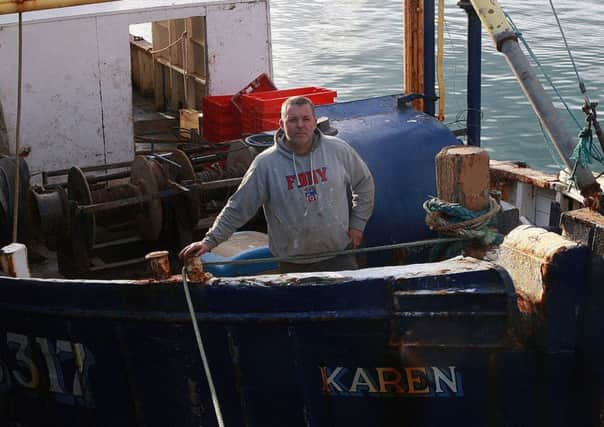Trawler crew were endangered by Navy submarine - report


The MV Karen was trailed at seven knots in April 2015 after the sub snagged in its nets.
Steve Clinch, chief inspector of marine accidents, said: “The accident happened because of insufficient passage planning by the submarine’s command team and their failure to follow guidance on fishing vessel avoidance.”
Advertisement
Hide AdAdvertisement
Hide AdHad the nets not separated from the Karen it is almost inevitable it would have capsized and sunk, he added.
South Down MP Margaret Ritchie said the collision struck fear into the crew and the wider Co Down fishing community.
The Royal Navy eventually gave “an acceptable and welcome” apology and offer of compensation, she said.
But the report “clearly illustrates the disregard of the Royal Navy for the safety of our fishing vessels and their crews as well as their ignorance of type of ships operating in the area”.
Advertisement
Hide AdAdvertisement
Hide AdKilkeel TUV councillor Henry Reilly said he was “very concerned” about the risk to life, but added that he “fully supports our armed services in the defence of our country”.
The Navy should have followed established protocols and stopped to allow the detachment of the nets, he added.
South Down Sinn Fein MLA Chris Hazzard called for the Irish Sea to become “a submarine-free zone”.
On the day in question, Navy Commanders were unaware of the collision until three hours later after they failed to realise they were passing beneath a fishing vessel with nets rather than a merchant cargo or passenger ship, the Marine Accident Investigation Branch (MAIB) report said.
Advertisement
Hide AdAdvertisement
Hide AdSteve Clinch, chief inspector of marine accidents, said: “Eighteen months ago, the actions of the command team of a Royal Navy submarine placed the lives of the crew of the trawler Karen in danger.
“Regrettably, the reluctance of the Royal Navy to fully engage in the subsequent investigation resulted in this report taking significantly longer to deliver than would normally be the case.
“The accident happened because of insufficient passage planning by the submarine’s command team and their failure to follow guidance on fishing vessel avoidance.
“Had its trawl warps not parted, it is almost inevitable that Karen would have capsized and sunk; the collision also presented a very significant risk to the submarine.”
Advertisement
Hide AdAdvertisement
Hide AdPart of the prawn trawler’s deck had to be lifted and another section was ripped off but the four crew escaped unharmed.
Mr Clinch said lessons learnt after the sinking of a trawler in 1990 had been lost.
“As a result, it is now important that the Royal Navy reviews its procedures and training for the safe conduct of dived submarine operations in the same vicinity as vessels engaged in fishing.
“By its actions, the Royal Navy also needs to rebuild trust with the fishing industry.”
Advertisement
Hide AdAdvertisement
Hide AdThe Karen’s crew managed to release net equipment but the accident caused it to heel heavily to port and its stern was submerged.
The report said: “Evidence of the collision on board the submarine was either not observed or misinterpreted.”
It said the accident occurred because the submarine’s command team detected no noise of trawling.
“The submarine was at a depth where it could, if necessary, pass safely beneath a merchant vessel, therefore the command team would not have perceived any risk of collision; as a result, no avoiding action was taken.
Advertisement
Hide AdAdvertisement
Hide Ad“The submarine’s command team had assessed that the majority of shipping contacts in the area were merchant vessels.
“However, most were actually trawlers; this was predictable and should have been identified as a significant risk to the safety of the submarine and other vessels when preparing the submarine’s passage plan.
“Had the submarine’s command team appreciated the high density of fishing vessels and then followed Royal Navy guidance on fishing vessel avoidance, the accident would have been avoided because the submarine would have been slowed down and returned to periscope depth when the density of shipping increased.”